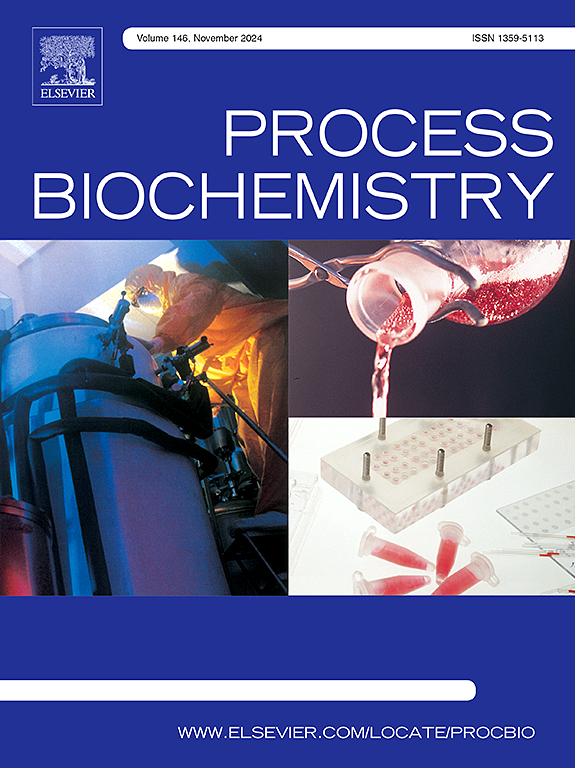通过外源吲哚乙酸和腺嘌呤样细胞分裂素的双重应用促进薄荷的植物生长、多酚积累和生物活性
IF 3.7
3区 生物学
Q2 BIOCHEMISTRY & MOLECULAR BIOLOGY
引用次数: 0
摘要
本文研究了腺嘌呤型细胞分化素(AD)和吲哚乙酸(IAA)两种植物激素联合处理对圆叶薄荷生长、酚类物质含量和生物活性的影响。IAA和AD分别为10 mg/L和/或20 mg/L (T1、T2、T3和T4),对圆叶薄荷进行了鲜重、干重、多酚含量、高效液相色谱(HPLC)分析和活性测定。测定提取物的活性,并与对照(未经处理的植物)进行比较。施用植物激素可显著提高植株鲜重和干重。各处理均显著提高了总酚含量(地上部分最高为235.7 µg GAE/mL,根部最高为252.69 µg GAE/mL),黄酮和黄酮醇含量因处理类型和植物器官而异。T1和T4处理对地上部位主要酚酸(奎宁酸、迷迭香酸和丹参酸)的促进作用最为显著,而T4处理对两个器官中单个类黄酮的促进作用则主要。对处理后的样品,提取物的抗氧化和酶抑制作用也增强。柚皮苷、迷迭香酸和丹酚酸B是抑制AChE和α-葡萄糖苷酶的主要酚类物质,其结合能较低(分别为- 9.8和- 10.5、- 8.9和- 8.4、- 8.8和- 9.8),在抑制效果最强的处理中含量最高。这些发现肯定了IAA/AD联合使用可能会诱导圆叶薄荷中多酚的发育和积累,从而提高其药理作用。本文章由计算机程序翻译,如有差异,请以英文原文为准。
Enhancing plant growth, polyphenols accumulation, and bioactivity of Mentha rotundifolia L. by dual application of exogenous indole acetic acid and adenine-like cytokinin
The present work explores the effects of combined treatments with two phytohormones, adenine-type cytokinin (AD) and indole acetic acid (IAA), on the growth, phenolic content, and biological activities of Mentha rotundifolia L. Four combinations of IAA and AD, which consist of 10 mg/L and/or 20 mg/L (T1, T2, T3, and T4), were applied to the plant and parameters including fresh weight, dry weight, polyphenols contents, HPLC profile, and the activity of the extracts were determined and compared to a control (untreated plants). The application of phytohormones significantly improved plant fresh and dry weights. Total phenolic contents were also increased for all treatments (a maximum of 235.7 µg GAE/mL in the aerial parts and 252.69 µg GAE /mL in the roots were recorded with the treatment T4), while flavonoids and flavonols contents varied according to the type of treatment and the plant organ. Treatments T1 and T4 induced the most significant increase in the main phenolic acids of the aerial part (quinic acid, rosmarinic acid and salvialonic acid), while individual flavonoids were mainly promoted by the treatment T4 in both organs. The antioxidant and enzyme inhibitory effects of the extracts were also enhanced for the treated samples. Naringin, rosmarinic acid and salvianolic acid B were suggested as the major phenolics contributing to AChE and α-glucosidase inhibition exhibiting low binding energies (−9.8 and −10.5, − 8.9 and −8.4, − 8.8 and − 9.8 respectively) and their contents were highest in the treatments giving the strongest inhibitory effect. The various discoveries affirm the possible use of IAA/AD in combination to induce the development and accumulation of polyphenols in Mentha rotundifolia L. and therefore the improvement of its pharmacological effects.
求助全文
通过发布文献求助,成功后即可免费获取论文全文。
去求助
来源期刊

Process Biochemistry
生物-工程:化工
CiteScore
8.30
自引率
4.50%
发文量
374
审稿时长
53 days
期刊介绍:
Process Biochemistry is an application-orientated research journal devoted to reporting advances with originality and novelty, in the science and technology of the processes involving bioactive molecules and living organisms. These processes concern the production of useful metabolites or materials, or the removal of toxic compounds using tools and methods of current biology and engineering. Its main areas of interest include novel bioprocesses and enabling technologies (such as nanobiotechnology, tissue engineering, directed evolution, metabolic engineering, systems biology, and synthetic biology) applicable in food (nutraceutical), healthcare (medical, pharmaceutical, cosmetic), energy (biofuels), environmental, and biorefinery industries and their underlying biological and engineering principles.
 求助内容:
求助内容: 应助结果提醒方式:
应助结果提醒方式:


